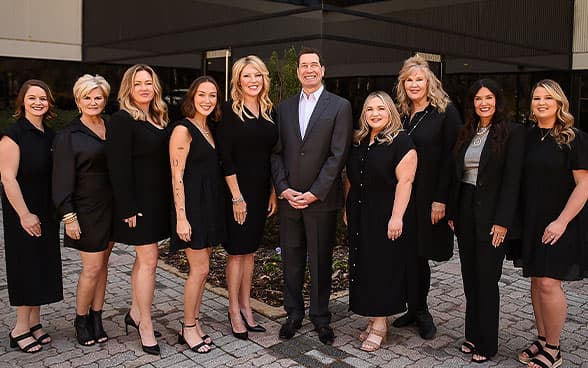Ethnicity, Wrinkles, and Eyelifts for African Americans
December 2, 2013 - Rhys Branman, MDIn general, Caucasian skin develops wrinkles sooner than African American skin. Although this is true of most of the face, African Americans develop wrinkles around the eyes at about the same rate as Caucasians. However, African Americans tend to develop ptosis, or drooping of the eyelid sooner than Caucasians. This is particularly true of the area where an angle is formed by the meeting of the upper and lower eyelid, at the inner eye, even though ptosis (drooping) of the eyebrow occurs later than in Caucasians. At the same time, traditionally, African Americans have been more wary of elective surgery than Caucasians. There are a couple of reasons for this. African Americans, like many darker skinned people, tend to develop keloid scarring with surgery, therefore special care must be taken. Studies have shown that 40% of African American women are afraid of losing their ethnic look or identity as well. This is not at all surprising considering that standards of beauty in the United States have been dominated by Caucasian images. Surveys also show that most African American women identify the look of their eyes with Asian women more than Caucasian women. For example, when not performed with ethnic identity in mind, some African American women can feel that blepharoplasty results in leaving their eyes looking “too round.” Consequently, eyelifts for African Americans must be planned with these things in mind.
Interestingly, keloid type of scarring is more likely around the outside of the face than the midface and inner eye area, partially because the collagen around the lower eyelid is different than in the rest of the face. Not only that, but by using a transconjunctival or internal eyelid approach, visual scarring is completely absent in the lower blepharoplasty. But also, because keloid scarring tends to occur toward the outer face, carefully limiting the incision so that it does not extend out as far laterally, or toward what is known as the “crow’s feet,” scarring can be avoided even with an external approach.
A substantive paper written in 2009 describes three case studies that exhibit ideal planning for this surgery in African Americans. Because the research is being done, cosmetic surgeons can perform blepharoplasty for people of color with confidence. Eyelifts are the fastest growing plastic surgery procedure amongst ethnic groups. Most people, including African Americans seek eyelifts in order to appear less “sleepy” as the upper eyelid droops with age, or because their vision is becoming impaired by ptosis. At Little Rock Cosmetic Surgery Center, eyelifts are carefully planned with your individual goals and ideal look in mind.
Call the Melinda at the front desk to set up your consultation 501-227-0707

